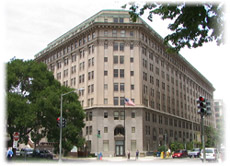 The Federal Bureau of Prisons was established in 1930 to provide more progressive and humane care for Federal inmates, to professionalize the prison service, and to ensure consistent and centralized administration of the 11 Federal prisons in operation at the time. Today, the Bureau consists of 114 institutions, 6 regional offices, a Central Office (headquarters), 2 staff training centers, and 28 community corrections offices. The regional offices and Central Office provide administrative oversight and support to Bureau facilities and community corrections offices. Community corrections offices oversee community corrections centers and home confinement programs. The Bureau is responsible for the custody and care of more than 201,000 Federal offenders. Approximately 85 percent of these inmates are confined in Bureau-operated correctional facilities or detention centers. The remainder are confined through agreements with state and local governments or through contracts with privately-operated residential re-entry centers, detention centers, prisons, and juvenile facilities. The Bureau protects public safety by ensuring that Federal offenders serve their sentences of imprisonment in facilities that are safe, humane, cost-efficient, and appropriately secure. The Bureau helps reduce the potential for future criminal activity by encouraging inmates to participate in a range of programs that have been proven to reduce recidivism. The Bureau's approximately 35,000 employees ensure the security of Federal prisons, provide inmates with needed programs and services, and model mainstream values. |